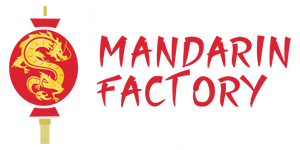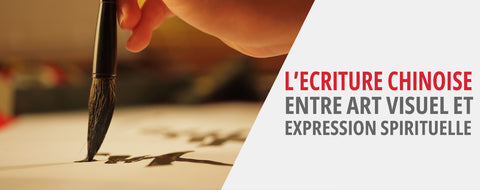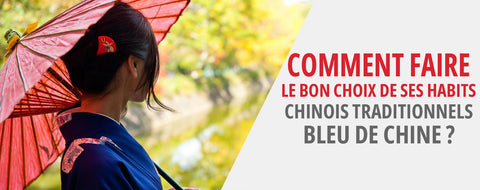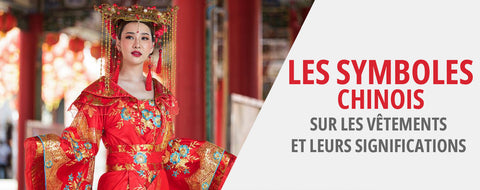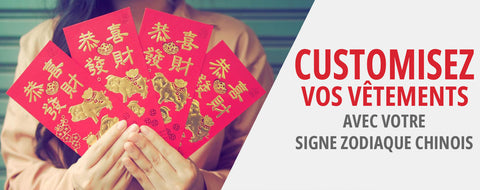
Chinese Opera
8 min reading - 2230 words
Chinese opera is considered one of the most precious legacies of traditional Chinese culture. Through this article we will introduce you to this magnificent Chinese art. There are more than 300 regional opera styles in China, here our team will introduce you to the 4 main ones and their characteristics, but first let's start by defining what Chinese opera is.
What is traditional Chinese opera?
Chinese opera along with Greek tragicomedy and Indian Sanskrit opera are the three forms dramatic art the oldest in the world. During the Tang Dynasty (618 - 907), Emperor Taizong established an opera school with the poetic name of Liyuan (Pear Garden). From this time on, Chinese opera performers were called "disciples of the pear garden". Since the Yuan Dynasty (1271-1368), it has been encouraged by court officials and emperors and has become a form traditional chinese art. During the Qing Dynasty (1644 - 1911), it became fashionable among ordinary people. Performances were watched in teahouses, theaters, restaurants and even around makeshift stages.
It evolved from songs, dances, speeches, and dialectical music. Gradually, it combined music, art, and literature into one musical show on stage. Accompanied by instruments of traditional music Like the Erhu, the gong, the Xiao flute and the lute, the actors present unique melodies as well as beautifully written dialogues of great literary value. These dialogues also promoted the development of distinct literary styles, such as the Zaju of the Yuan Dynasty. For Chinese people, especially the elderly, listening to this kind of opera is a real pleasure.

Perhaps what attracts foreigners the most are the different styles of face makeup, which is one of the highlights and requires special painting techniques. Exaggerated patterns are painted on each artist's face to symbolize a character's personality, role, and destiny. This technique can be derived from ancient religions and dances. Spectators who are familiar with opera can learn the story by watching the face painting as well as the costumes. Generally, a red face represents loyalty and bravery, a black face, courage, yellow and white faces, duplicity, and gold and silver faces, mystery.
Besides color, lines also function as symbols. For example, a character can be painted either all white on his face or just around the nose. The larger the white area painted, the more viper the role.
Another technique that fascinates people is that of wonderful acrobatics. Actors may draw fire from their mouths when playing the role of a spirit, or crouch and gallop to play the role of a dwarf. This reflects a saying among actors: One minute of performance on stage requires ten years of training behind the scenes.

Over the past 800 years, Chinese opera has evolved into many regional varieties different based on local features and accents. Today, there are more than 300 regional opera styles dazzling. Kun opera, which originated in Jiangsu Province, is a typical ancient opera style and is characterized by sweetness and clarity. This has allowed it to be listed as a world oral and intangible heritage. Shaanxi Qinqiang opera, known for its sonority and wildness, Cantonese opera and Huangmei opera are all very enjoyable. Peking opera, the most famous Chinese opera style, was born from the blending of these regional styles.
Beijing Opera
Peking Opera is the quintessence of China. It is the largest form of Chinese opera, and is called "Oriental Opera" or "National Opera". With a history of 160 years, it has created many "firsts" in the Chinese dramas : the abundance of repertoires, the number of artists, opera troupes and spectators.
Peking opera developed by absorbing many other dramatic forms, mainly the local drama "Huiban" which was popular in the south of Traditional China in the 18th century. It is a stage art that integrates music, performance, literature and face painting. Certain rules are put in place and are standardized over time and the practice of many artists on stage.
Peking Opera presents dramatic plays and characters mainly by infusing four artistic methods: singing, THE dialogue, there dance and the martial arts. Singing is used to intensify the appeal of art by all kinds of tones. Dialogue is the complement of singing, which is full of musical sensations and rhythmic. Dance refers to body movements that require great skill, it is a real ballet. Martial arts are the combination and transformation of traditional Chinese combat exercises with dances, it is particularly inspired by the martial art Qi-gong.

Peking Opera Characters
In Peking Opera, there are usually four main roles: Sheng (male roles), Dan (female roles), Jing (painted-face roles), and Chou (clowns). An actor is usually trained for only one type of role; he or she almost never plays other roles. Actors who are able to play multiple types of roles are considered particularly talented.
Sheng
This is the main male role in Peking Opera. There are three main roles in this category: Laosheng, Xiaosheng, and Wusheng.
- Laosheng refers to the middle-aged man or old man. They often wear beards and sensible suits to show their dignity. Actors who play this role are usually academics or high-level officials.
- Young artists usually play the role of XiaoshengThey have no beards and usually sing in a high-pitched, piercing voice, with occasional pauses to represent the vocal-changing period of adolescence.
- Wusheng depicts the most exciting elements of Chinese opera. A well-known example of Wusheng's role is the Monkey King, portrayed in a number of operas based on the famous story "A Journey to the West."
Dan
Dan refers to any female role in Peking Opera. There are many more types of female roles than male ones, although women did not have equal status with men in ancient China. Due to the different characters, statuses, and ages, the role of Dan is divided into Laodan, Wudan, Daomadan, Qingyi, and Huadan.
- Laodan refers to old Chinese women who do not wear makeup on their faces. They sing with their natural voice which is much deeper than Dan's other roles.
- Wudan refers to female martial artists and is the equivalent of the Wusheng role for men.
- Young warrior women are Daomadan. This character usually wears armor and large peacock feathers in his hat.
- The actress Qingyi is the noble, virtuous and elite woman. These faithful, correct, shy and graceful women are considered the model or ideal of the Chinese woman.
- The social status of Huadan is inferior to all other female roles. They are lively and often unmarried. This role represents a more fiery and flirtatious young woman.
Jing
Jing is a male role portrayed in Peking Opera. It is the most recognizable part in Chinese opera. Jing actors always play the role of army generals or of high ranking bandits, of warriors or of civil servants. Their meticulously painted faces indicate the character's strength of character and temperament. For this reason, the Jing have a loud voice and must be able to exaggerate their gestures. In this part of the Peking Opera, a white face signifies betrayal, black honesty, red courage and virtue, and blue cruelty or wild temperament. A mixture of several colors indicates a more complicated personality. The characters Baozheng and Caocao are typical representatives of Jing.
Cabbage
Cabbage has the same meaning as clown and can be either male or female. Male clowns all wear a white patch of makeup around their nose and eyes, while female clowns usually have reddened faces with black eyebrows. The role of Chou is divided into two categories: Wen Chou and Wu Chou. This means that the roles are respectively merchants or small activist roles. They perform with comic acting, acrobatics and a loud voice.
Kunqu Opera

L'Kunqu Opera is an ancient opera originating from Kunshan, Suzhou, Jiangsu Province, which has a history of over 600 years. Although it is performed in the dialect of Suzhou, Kun opera is also popular in the Yangtze River Delta, especially in Shanghai and Hangzhou, as well as Beijing. It has been considered the father of other operas in China, as it exerts a considerable influence on most Chinese operas in terms of artistic presentations, use of facial makeup, division of roles, and many other ways. It plays an important role in Chinese history literature, opera, music and dance.
Kunqu Opera was founded in Kunshan more than 600 years ago. It surpassed other operas for 300 years in ancient times because its melody had been improved by the folk musician Wei Liangfu in the 1500s during the Ming Dynasty (1368 - 1644). Later, it began to decline in the middle of the Qing Dynasty (1644 - 1911). There was no professional troupe to perform Kun opera before 1949. In 1950, six Kunqu opera troupes were established one after another. Today, there are 8 Kunqu opera troupes in mainland China. In 2001, Kunqu opera became world cultural heritageThe renaissance of Kunqu opera continues, although it is not so easy.
Characteristics of Kunqu Opera
Kunqu Opera has a strict and complete system of its own, with artistic presentations of singing, dancing, speaking, etc. The most obvious feature of Kunqu Opera is a strong lyricism, which requires performers to pay attention to the details of each posture and of each voice. The dances of Kunqu opera have adopted the folk and court dances of ancient times, to fit harmoniously with the whole drama. Moreover, the famous pieces of Kunqu opera are almost written in Antiquity, so that all words are spoken or sung in classical Chinese. Thus, Kun opera has been considered a living fossil of classical Chinese operas.
Sichuan Opera

Sichuan Opera (Chuan Ju) originated in the late Ming Dynasty (1368-1644) and early Qing Dynasty (1644-1911). With the mass arrival of immigrants to Sichuan, different dramas were introduced to blend in with the local dialect, customs, music and dances. Gradually, a full-fledged Sichuan Opera humorous, reflecting the traditional culture of Sichuan, was born.
THE face change is the highlight of Sichuan opera. It is said that ancient people painted their faces to drive away wild animals. Sichuan comic opera absorbs this ancient skill and perfects it into an art.
Face changing is a magical art. Actors change more than 10 masks in less than 20 seconds! By raising a hand, swinging a sleeve or shaking his head, an actor uses different masks to show different emotions, expressing invisible and intangible feelings through visible and tangible masks. From green to blue, red, yellow, brown, black, dark and gold, these masks show fear, tension, relaxation, deviousness, despair, indignation, etc.
The master of Sichuan opera, Peng Denghuai, changed 14 masks in 25 seconds, and returned to four masks after revealing his true face. This is his latest Guinness World Record, breaking the previous one.
Today, technology is being used to enhance this traditional art. Lasers and twinkling lights add a touch of mystery. And modern faces like Zorro are being invited to take the stage.
Shanghai Opera House (Huju)

Shanghai Opera (Huju) originated around the same time as Peking Opera, about 200 years ago. However, the Shanghai Opera version is based on local folk songs from the Huangpu River region rather than those of Anhui and Shanxi. Huju is performed in the Shanghainese dialect of Wu Chinese, which is not mutually intelligible with Mandarin. In other words, a person from Beijing would not understand the words of a Huju play.
Due to the relatively recent nature of the stories and songs that make up the Huju, the costumes and the makeup are relatively simple and modern. Shanghai Opera actors wear costumes that resemble the street clothes of ordinary people in the pre-communist era. Their makeup is not much more elaborate than that worn by Western stage actors, which contrasts sharply with the heavy, greasy paint used in other forms of Chinese opera.
Huju reached its peak in the 1920s and 1930s. Many stories and songs from the Shanghai area show a clear western influenceThis is not surprising, given that the major European powers maintained trading concessions and consular offices in the prosperous port city before World War II.
Like many other styles regional opera, Huju is in danger of disappearing forever. Few young actors take up the art form, as fame and fortune are much greater in film, television, or even Peking opera. Unlike Peking opera, which is now considered a form national art, Shanghai opera is performed in a local dialect and therefore does not translate well to other provinces.
Nevertheless, the city of Shanghai is home to millions of people, with tens of millions more in the immediate vicinity. If a concerted effort is made to introduce a younger audience to this interesting art form, Huju could survive and delight spectators for centuries.
Now you know everything there is to know about Chinese operas, we hope you enjoyed this article and if you want to continue to learn more about Chinese traditions and Chinese arts, you can go and consult our article on theChinese embroidery art.
